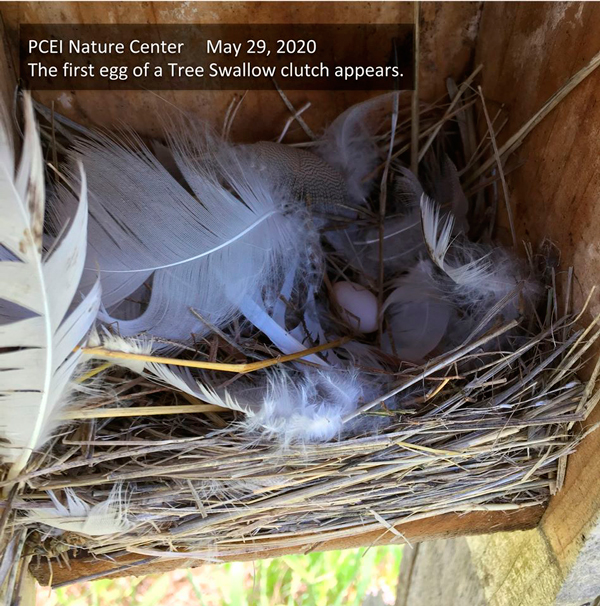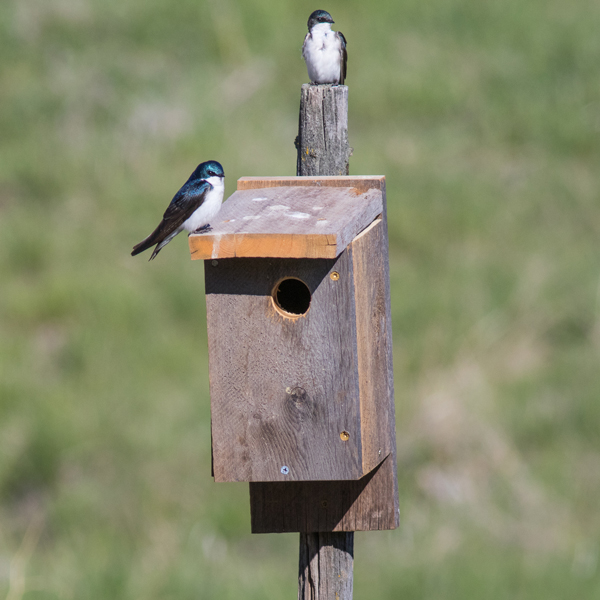
PCEI is excited to participate in NestWatch, a nationwide citizen science run by The Cornell Lab of Ornithology in an effort to learn more about the nature in our backyards and parks while also collecting valuable data for scientists studying effects of climate and land-use on wildlife.
Volunteers will have an opportunity to get up close to birds nesting at the Palouse Nature Center while learning about birds and how they fit in to our local ecology.
If you are interested participating in Project NestWatch at the Palouse Nature Center, contact us at info@pcei.org.
For more details about this nationwide program visit nestwatch.org.

June – mid July 2020
The month of June and first half of July have been busy weeks for the birds breeding at the PCEI Nature Center. Robins were fledging in early June, a juvenile red-tailed hawk made its presence known in mid-June, tiny fluffy California quail appeared on the summer solstice.
In the nest boxes at the Nature Center tree swallows have been the primary native species to hatch and fledge young during the early summer period. Five nesting attempts resulted in six fledged tree swallows.

After hatching, the young swallows are tiny and featherless. In a period of only three weeks they gain huge amounts of mass and grow feathers so that when they leave the nest they are nearly as big as their parents. All of this rapid growth and development is powered by a steady diet of insects tirelessly delivered by both parents.

Early June
It’s the beginning of June and the nesting season is starting to ramp up. We look forward to seeing what happens during the next few weeks as incubating, hatching, feeding and fledging reaches a frenetic pace.

Our first NestWatch surveys of 16 nest boxes located across the Nature Center started in mid-May and has revealed that 13 boxes are being actively used by our feathered friends.

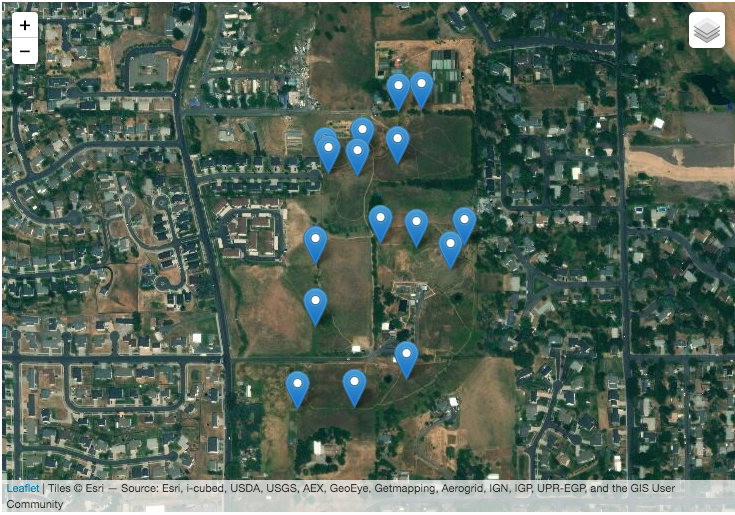
Three native species, western bluebird (Sialia mexicana), tree swallow (Tachycineta bicolor) and house wren (Troglodytes aedon) are using the majority of the boxes but are being challenged by competition from the invasive house sparrow (Passer domesticus) in five boxes.
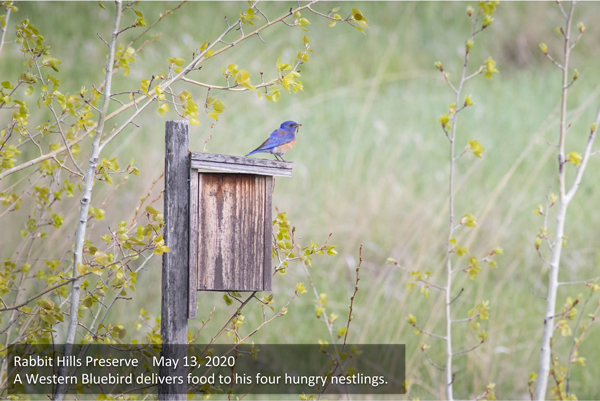
The lone pair of bluebirds got an early start and have already fledged four young from a nest box in Rabbit Hills Preserve (part of the Palouse Nature Center). Hopefully the pair will raise another clutch this season.
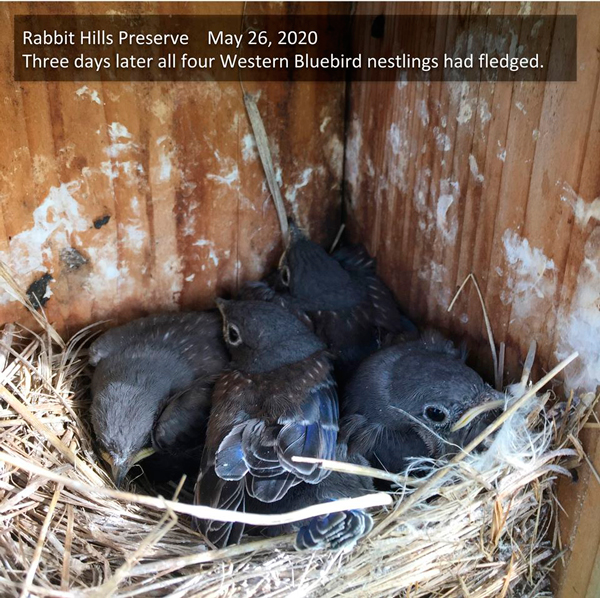
Tree swallows are the most abundant nesters thus far and have been building nests for several weeks. The first two tree swallow eggs appeared on May 22, 2020 in a neat little nest made of moss and feathers.
